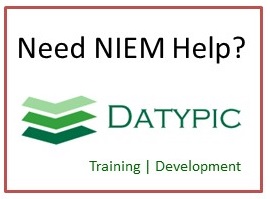gml:surfaceMembers
This property element contains a list of surfaces. The order of the elements is significant and shall be preserved when processing the array.
Element information
Namespace: http://www.opengis.net/gml/3.2
Schema document: external/ogc/gml/3.2.1/geometryAggregates.xsd
Type: gml:SurfaceArrayPropertyType
Properties: Global, Qualified
Content
- Choice [0..*]
- gml:PolygonA Polygon is a special surface that is defined by a single surface patch (see D.3.6). The boundary of this patch is coplanar and the polygon uses planar interpolation in its interior. The elements exterior and interior describe the surface boundary of the polygon.
- gml:CompositeSurfaceA gml:CompositeSurface is represented by a set of orientable surfaces. It is geometry type with all the geometric properties of a (primitive) surface. Essentially, a composite surface is a collection of surfaces that join in pairs on common boundary curves and which, when considered as a whole, form a single surface. surfaceMember references or contains inline one surface in the composite surface. The surfaces are contiguous.
- gml:SurfaceA Surface is a 2-dimensional primitive and is composed of one or more surface patches as specified in ISO 19107:2003, 6.3.17.1. The surface patches are connected to one another. patches encapsulates the patches of the surface.
- gml:PolyhedralSurfaceA polyhedral surface is a surface composed of polygon patches connected along their common boundary curves. This differs from the surface type only in the restriction on the types of surface patches acceptable. polygonPatches encapsulates the polygon patches of the polyhedral surface.
- gml:TriangulatedSurfaceA triangulated surface is a polyhedral surface that is composed only of triangles. There is no restriction on how the triangulation is derived. trianglePatches encapsulates the triangles of the triangulated surface.
- gml:TinA tin is a triangulated surface that uses the Delauny algorithm or a similar algorithm complemented with consideration of stoplines (stopLines), breaklines (breakLines), and maximum length of triangle sides (maxLength). controlPoint shall contain a set of the positions (three or more) used as posts for this TIN (corners of the triangles in the TIN). See ISO 19107:2003, 6.4.39 for details.
- gml:OrientableSurfaceOrientableSurface consists of a surface and an orientation. If the orientation is "+", then the OrientableSurface is identical to the baseSurface. If the orientation is "-", then the OrientableSurface is a reference to a gml:AbstractSurface with an up-normal that reverses the direction for this OrientableSurface, the sense of "the top of the surface".
from subst. group gml:AbstractSurfacefrom subst. group gml:Surfacefrom subst. group gml:TriangulatedSurface
Attributes
| Name | Occ | Type | Description | Notes |
|---|---|---|---|---|
| owns | [0..1] | xsd:boolean | Default value is "false". from group gml:OwnershipAttributeGroup |
Used in
- Type gml:MultiSurfaceType (Element gml:MultiSurface)
Sample instance
<gml:surfaceMembers> <gml:Polygon gml:id="ID"> <gml:metaDataProperty> <gml:GenericMetaData>Any text, intermingled with: <!--any element--> </gml:GenericMetaData> </gml:metaDataProperty> <gml:description>string</gml:description> <gml:descriptionReference/> <gml:identifier codeSpace="http://www.example.com/">string</gml:identifier> <gml:name>string</gml:name> <gml:exterior> <gml:LinearRing>... </gml:LinearRing> </gml:exterior> <gml:interior> <gml:LinearRing>... </gml:LinearRing> </gml:interior> </gml:Polygon> </gml:surfaceMembers>



